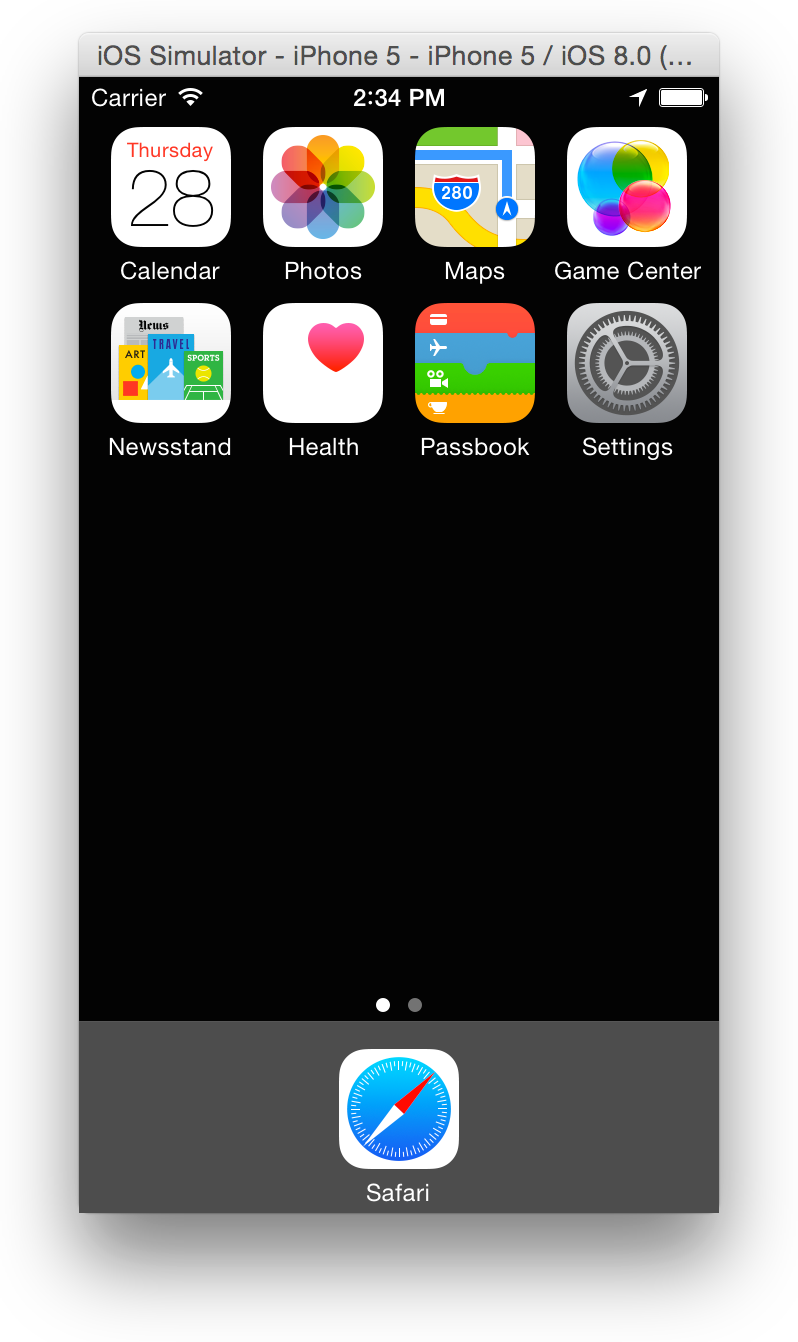Simulator app, available within Xcode, presents the iPhone, iPad, or Apple Watch user interface in a window on your Mac computer. You interact with Simulator by using the keyboard and the mouse to emulate taps, device rotation, and other user actions. Free iOS Simulator for Mac Use latest Xcode for latest iOS Simulator. IOS code sample (GitHub) macOS code sample (GitHub) Create a new project. Open Xcode and select Create a new Xcode project. For iOS apps, select iOS Single view App and select Next. For macOS apps, select macOS Cocoa App and select Next. Provide a product name. Set the Language to Swift and select Next. Select a folder to create your app.
Question or issue on macOS:
- Driving Simulator Mac Os X Launch the App Store from your IOS Phone (Iphone 5, Iphone 5S, Iphone 6, Iphone 6s, Iphone 7, Iphone 8, Iphone X or your Ipad for example). Enter Extreme Car Driving Simulator in the search bar and press on the icon of the app to enter on the app details.
- You can view the console for the iOS Simulator via desktop Safari. It's similar to the way you use desktop Safari to view the console for physical iOS devices. Whenever the simulator is running and there's a webpage open, there'll be an option under the Develop menu in desktop safari that lets you see the iOS simulator console.
- One of the best iOS emulators for Windows 10, iPadian is a completely paid solution, so you can’t really get a free trial or anything for it. As the name suggests, this is an iPad simulator. Like other simulators, you don’t get things like the App Store with iPadian.
Ios Simulator On Macos
I’m writing an iOS app that acts as, among other things, a telnet server. Naturally, it begins listening for connections as soon as it starts.
When I run the app in the Simulator, Mac OS X (I happen to be on 10.7.3) prompts me to Allow or Deny my application to accept incoming network connections. This is the standard Firewall message that Mac OS X uses for all unsigned, networked applications.
I grow weary of clicking “Allow” fifty or more times a day, and so I seek a way of permanently adding my app to the Firewall’s list of permitted apps.
I’ve tried the following.
In the last step there’s a significant decision. You could add either the .app application package, or Show Contents on that package and add the “Unix executable” within. I’ve tried both approaches.
Interestingly, Firewall will in fact stop warning you about the app—for a while. After a few runs, however—it isn’t clear to me what event actually causes this change, but it happens within half an hour or so for me, generally speaking—Firewall begins warning about the app again.
Ios Simulator Macbook
How do I set Firewall to permanently Allow my iOS app?
Naturally, I could bypass this whole problem by disabling the Mac OS X firewall. I could also avoid ever again getting a splinter in my foot by chopping it off. Neither of these courses of action recommend themselves to me.
What would you suggest?
How to solve this problem?
Solution no. 1:
So we want to suppress the following dialog
Do you want the application “NNN.app” to accept incoming network
connections?
which appear on every activation of the Xcode iOS simulator.
I believe there is now a solution for that. Basing my answer on this blog.
Simply run the following commands in a Terminal window:
For me it worked. Please note simulator address is according to Xcode 8.
Solution no. 2:

After dabbling with this for some time, I found that manually adding the executable itself to the Firewall “Allow” list gives the desired result. You don’t add the .app, but rather the “Unix” executable inside the .app’s Contents folder. I believed I had tried this file before without success, but currently it’s working.
Solution no. 3:
I think the best solution might be to script the process of okaying your app to the firewall.
If I recall correctly, the latest OSX firewall is actually clever about identifying apps and fingerprints the allowed binaries. This prevents the surprisingly effective tactic of just naming your malware “system32.exe” &c to evade the firewall. If that’s the case, your app will be (correctly) blocked for not being the same binary that was okayed, and there’s not really any way around it.
So, try scripting the firewall allowing process and incorporate that into the build process.
Solution no. 4:
I never had luck with manually adding the executable to the firewall’s allowed-list. Here’s a solution using an automated mouse click:
- Download CLIclick. (Thank you Carsten.)
- Put it in a suitable location, say
/usr/local/bin. - Get the
Allowbutton’s screen coordinates using ⌘⇧4. (In my example, these are x: 750, y: 600.) Create a script with this content (the
w:is the wait time in ms):(I couldn’t get
CLIclickto work without “moving” it to the same location (them:+0,+0part) and clicking again at the same spot withc:..)- Open Xcode’s
Preferences / Behaviorsand add the above script. - Enjoy!
Solution no. 5:
I don’t know if it is the right way but for me worked.
- Turn off the firewall
- Connect with the iphone app to your mac
- Check if everything in the connection working
- Turn on the firewall